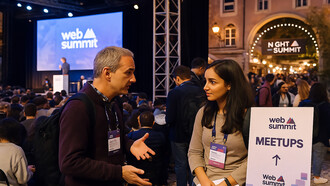The smart hypothesis is that energy prices are going to stay high. There is the political and military uncertainty in the Ukraine, with the US on standby to provide Europe an independent energy supply. And when we decide to include the health costs and the climate damage costs of fossil fuels in their price, this correct price will be higher. This will be introduced slowly, perhaps without the revenue-neutral dividends, but it is coming first in Canada, countries in Europe, and eventually the US.1
The smart money is moving out of gas in homes. There is the problem of higher energy taxes, higher gas prices and volatility. Make a check of your home energy situation. This can be done on a weekly or monthly basis. The next step is to ask for an energy diagnosis and your electric utility as an excellent place to start. Plan for your energy investments. Go all electric. Heat pumps heat and cool, whereas gas water and space heating provide only heat. The same is valid for commercial buildings. Check out the photos and information regarding the award-winning energy efficient homes. Some of the most significant improvements include caulking air leaks, programmable thermostats, windows, doors, and much more.
Deep retrofits
This implies that deep retrofits will become profitable. These are home retrofits with the highest energy savings objectives. The American Council for an Energy Efficiency Economy (ACEEE) recently reports that “upgrading homes with thick insulation, thorough air sealing, efficient heat pumps, and other measures can more than halve their energy use and planet-warming emissions, offering a win-win opportunity to improve residents’ comfort, lower their utility bills, and address the climate crisis… These deep retrofits can cut a home's energy consumption by 58 to 79 percent and its emissions by 32 to 56 percent, depending on the home’s age and regional climate… Such retrofits improve indoor air quality, even out temperatures, and reduce noise, but at $42,600 to $56,750, they cost more than most homeowners can afford.”2
However, with sustained energy prices, state and federal government's interest in providing more incentives, and structuring the retrofit into two stages, this will become the future of energy efficiency for homes. A detailed analysis is presented by the ACEEE.3
Zero-energy building
A cousin of the deep retrofit is the zero-energy building (ZEB). It is a structure that produces more energy, usually electricity, than it consumes, thus the name. During the day, it may buy and sell electricity, but the net consumption is zero. The production structure, usually involving photovoltaic modules, requires space so these buildings are typically new. A review, with photographs, has been performed of the 20 most important ZEB programs in the country, covering 200 single houses, 900 multifamily apartments, and 74 commercial buildings. “Many of the programs noted that to promote zero and zero-ready homes and buildings, the multiple benefits of these homes and buildings need to be featured, such as their impacts on comfort, health, and worker satisfaction, in addition to operating cost savings. Programs also report that it is useful to have simple incentive structures that are easy for builders, designers, and developers to understand… A few programs see their efforts as part of a market transformation approach to ultimately move toward zero-energy building codes. This is a major focus of California utilities and state government. Likewise, the Northwest Energy Efficiency Alliance (NEEA) is now developing a strategy to make zero-energy common practice by 2030.”4 A ZEB might be right for you! One of the largest ZEBs is located at the University of Davis West Village campus, which integrates student and faculty housing with educational and research facilities, becoming a small ‘energy zero’ neighborhood.
Cool transport
Smart money is also thinking of cool transport. Cool in style and efficiency. Your next car should be all electric, or hybrid, and above all efficient. Check out the energy rating of your candidate cars. Don’t buy a power prancer; hip earlier but very out now. Avoid higher fuel taxes and prices. The most extraordinary form of transport is self-propulsion, walking, and biking. They’re good for your health too.
Healthier diets
And finally, smart people are looking at healthier diets. Reducing (a little) your red meat consumption is an excellent and straightforward starting point, with less likelihood of heart disease, stroke, or diabetes. A 3.2 oz. beefsteak produces 100 pounds of greenhouse gases. The impact of livestock on emissions varies between countries. Globally, the UN estimates it makes up more than 14% of all man-made greenhouse gases, including methane.
References
1 Meyer, R., (2022), The climate problem that free money can’t solve, The Atlantic, January 26.
2 Somberg, B., (2021) Press Release, Report: Deep Retrofits Can Halve Homes Energy Use and Emissions.
3 Amann, J., R. Srivastava, and N. Henner, (2021). Pathways to Residential Deep Energy Reductions and Decarbonization, Washington, DC: American Council for an Energy-Efficient Economy.
4 Nadel, S. 2020. Programs to Promote Zero-Energy New Homes and Buildings. Washington, DC: American Council for an Energy-Efficient Economy.















